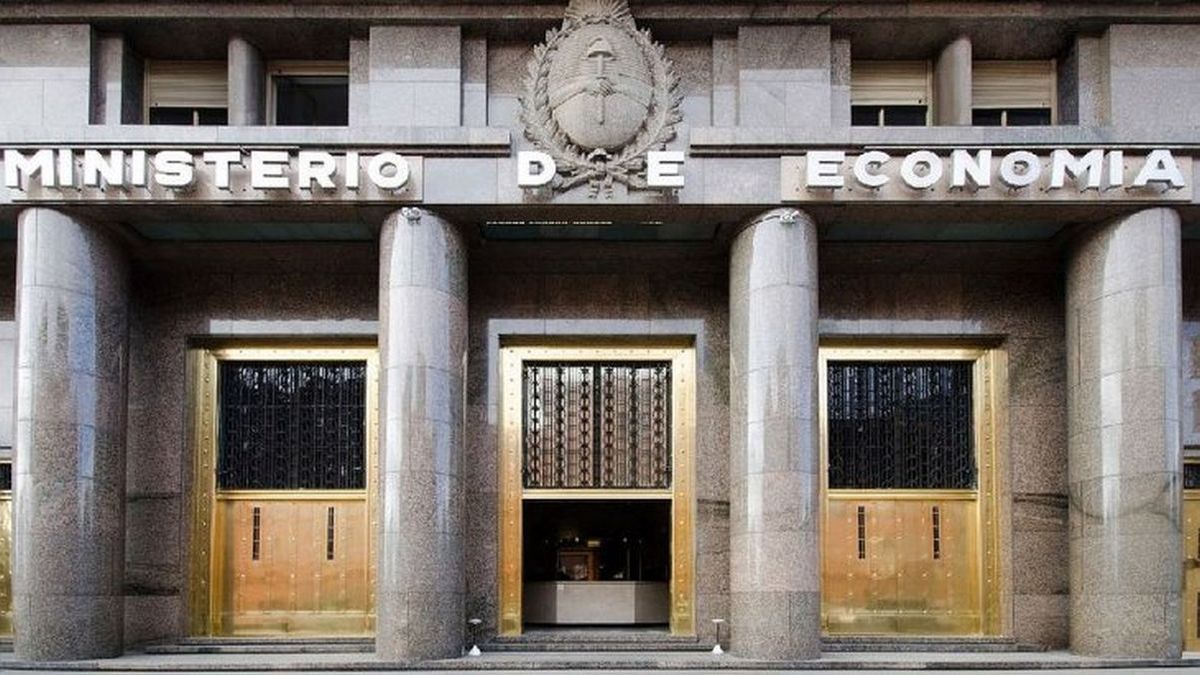The Ministry of Economy placed $892,552 million this Tuesday in the last tender debt in pesos of October. The team of Luis Caputo did not manage to renew the entire $1.6 billion that expires this week and released around $700,000 million to the market. Thus, what had happened at the end of September was repeated, when 100% of the commitments were not refinanced either.
The truth is that it was a private auction. Given the relatively low maturities Regarding previous placements, the economic team decided to take the opportunity to send you a signal to the marketwhich sought to boost growing expectations of a slowdown in the economy’s nominal value. In the midst of the boom in demand for securities in pesos at a fixed rate, the Ministry of Finance chose not to offer either Lecap or Boncap and only put inflation-linked bonds (CER) on the table.
The decision came two effects: on the one hand, between the close of operations on Friday (when the call for bids was made with the details of the instrument menu) and this Tuesday, The long Lecap and Boncap rally intensified in the secondary market, which led to further compressing the yield curve and lowering the inflation expectation implicit in the prices of financial assets; On the other hand, during the bidding, Only 55% of weekly maturities were renewed.
In the Government since last month, when for the first time there was a partial renewal of the Treasury’s maturities in pesos, they began to assure that it is a consequence derived from the economic plan itself. They affirm that, having cut off the direct issuance taps of the Central Bank, one of the ways that banks have to obtain liquidity when they receive credit demand from their clients is not to renew all of their Lecap holdings.
However, if the financing obtained in the two October tenders is taken into account, The percentage of renewal of monthly commitments was 102%. That is, there was no disarmament in the overall result.
So, this time, some operators told Scope that the low roll over rate could have responded to the vocation to go with the pesos to demand long securities at a fixed rate in the secondary market instead of entering a tender in which they could only subscribe for inflation-indexed bonds. In short, it is something that will be finalized after Thursday, when the auction is settled.
Debt: the result of the tender
Specifically, Economía received offers for $1.05 billion in effective value, but decided to award only $892,552 million. One of the readings was that officials preferred not to validate subscriptions with higher rates and set a guideline for real returns.
Thus, it placed $343,064 million in a new zero-coupon Boncer as of May 2025 (TZXY5) with an annual nominal cut-off rate of 11.43% plus CER; issued $73.77 billion in the new Boncer zero coupon as of October 2025 (TZXO5) with TNA of 11.98% plus CER; $131,025 million in the reopening of the Boncer zero coupon as of March 2026 (TZXM6) with TNA of 11.84% plus CER; and $344,693 million in the new Boncer zero coupon as of October 2026 (TZXO6) with TNA of 12.51% plus CER.
So, The annual effective internal rates of return (TIREA) fell at 11.7%, 11.98%, 11.57% and 11.81%, respectively, as reported by the Secretary of Finance, Pablo Quirno.
Embed – https://publish.twitter.com/oembed?url=https://x.com/pabloquirno/status/1851353523692171755&partner=&hide_thread=false
The Ministry of Finance announces that in today’s tender it awarded $0.89 billion, having received offers for a total of $1.06 billion.
The instruments awarded are:
BONCER ZERO COUPON to:
05/30/25 $0.34 billion at +11.70% IRR
10/31/25 $0.07 billion to…
— Pablo Quirno (@pabloquirno) October 29, 2024
The boom of the Lecap and the Boncap
Meanwhile, this Tuesday the market’s reaction to the lure that the Treasury placed with the menu of securities for this tender continued. If in recent weeks the Lecap (especially the longer ones) and the Boncap had already operated with strong increases, The rally intensified after the call for tenders (which did not include this type of instruments) during the first two wheels of the week. The mere inclusion of Boncer “could have generated a feeling of ‘scarcity’, leading the market to demand more papers at a fixed rate,” said Juan Manuel Franco, chief economist of the SBS Group, in dialogue with Ámbito.
On Monday, Lecaps that expire in August and September 2025 jumped between 2.2% and 3% in the secondary market, while Boncaps rose between 2.6% and 3%. On Tuesday, long Lecaps climbed up to 1.3% and Boncaps, up to 1.8%.
In this way, the rates monthly effective (TEM) of the longest section of the curve ended between 2.9% and 3.1%. This further accentuated the reversal of the slope since the Lecap of the shortest section remained between 3.4% and 3.5% TEM.
This pronunciation of the negative slope of the fixed rate yield curve reflects that the market bought the Government’s message: that the slowdown in inflation would continue its course and that, therefore, rates would tend to decline in the future. Faced with these expectations (whether optimistic or not), investors demand more longer securities to fix a yield at current values for longer under the presumption that they could continue to decline in the coming months. That is why the shorter bills pay higher rates than the longer Lecap or Boncap, giving rise to the inversion of the curve.
Thus, the call “inflation breakeven” (implicit in the comparison of fixed rate and CER quotes) gradually approaching 2% for the average of the next twelve months. The truth is that the scenario that bought the market remains to be seen. For example, the latest Market Expectations Survey (REM) from the Central Bank (carried out at the end of September and published at the beginning of October) projected an oscillating path for the CPI in a range of between 3.6% and 3% from here. to March 2025. Although some consulting firms already estimate that 3% could have been drilled in October: Eco Go estimated 2.8%.
Yet, The Government seeks not to neglect the incentives for the “carry trade”the strategy that consists of selling dollars, placing an asset in pesos with rates higher than the variation in the exchange rate and repurchasing currencies before their price jumps. This mechanism, popularly known as the “financial bicycle”, It has already left juicy gains in dollars of 31.8% in the accumulated since the beginning of the year until mid-October, according to calculations by economist Nery Persichini.
The bets are based on the expectation that the Caputo will continue with the exchange rate table for the official dollar and that the gap will remain under control (with the contribution of the blend dollar). The “carry” serves the Government as it encourages the settlement of foreign currency such as credit in dollars, which in these months was the basis of BCRA purchases. For all this, Some voices in the city already expect that at the beginning of 2025 the Central will begin to reduce the pace of the monthly increase in the wholesale exchange ratewhich has been fixed at 2% since the December megadevaluation. Other voices warn that these processes always involve risks of eventual runs in case expectations reverse.
Source: Ambito
I am a 24-year-old writer and journalist who has been working in the news industry for the past two years. I write primarily about market news, so if you’re looking for insights into what’s going on in the stock market or economic indicators, you’ve come to the right place. I also dabble in writing articles on lifestyle trends and pop culture news.




